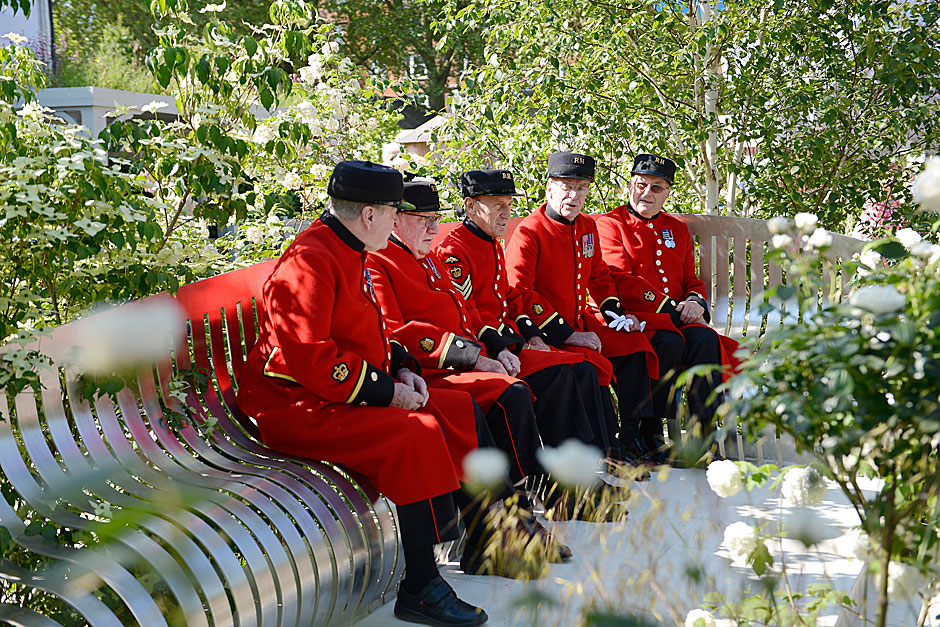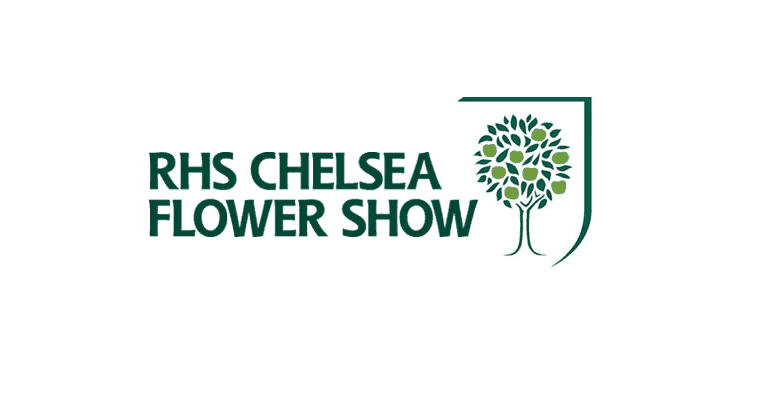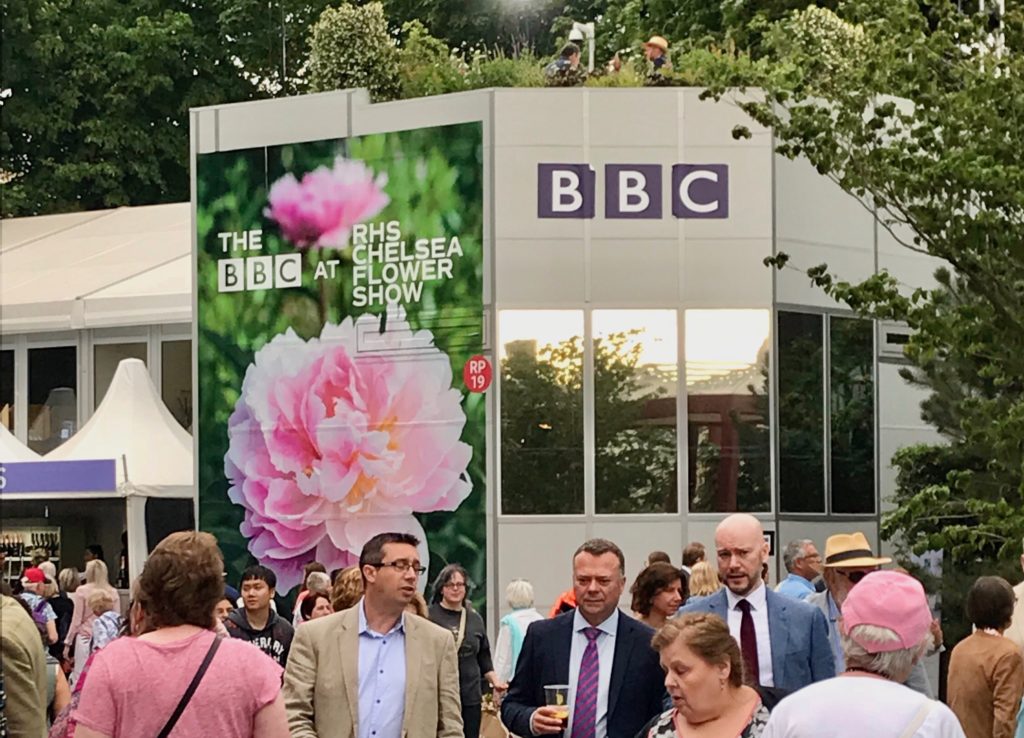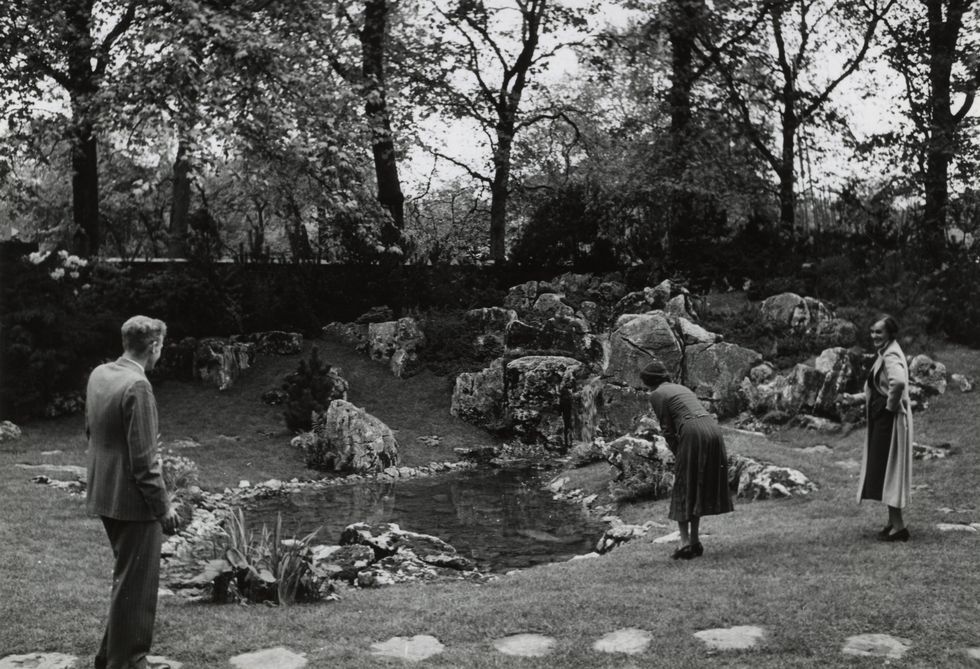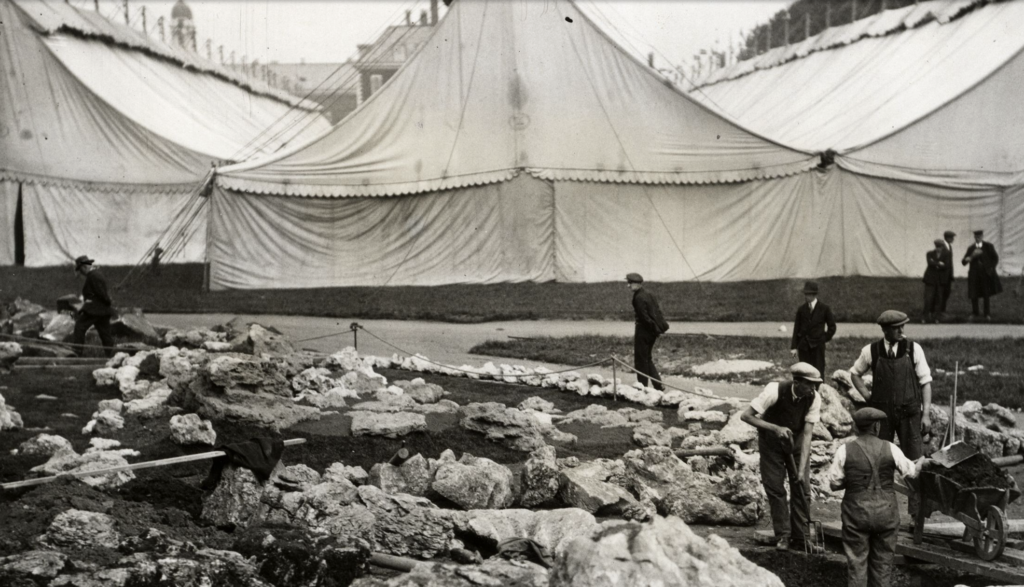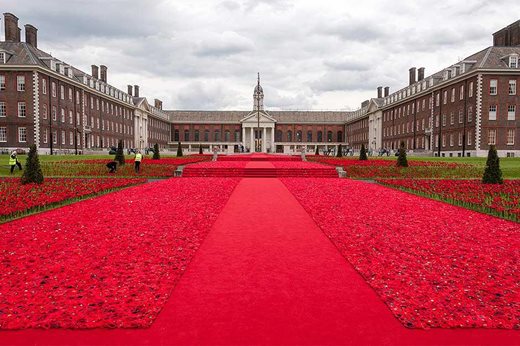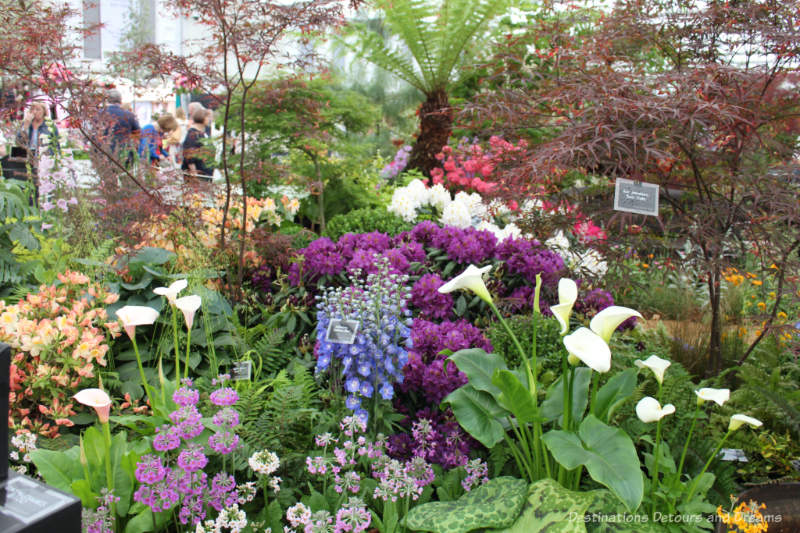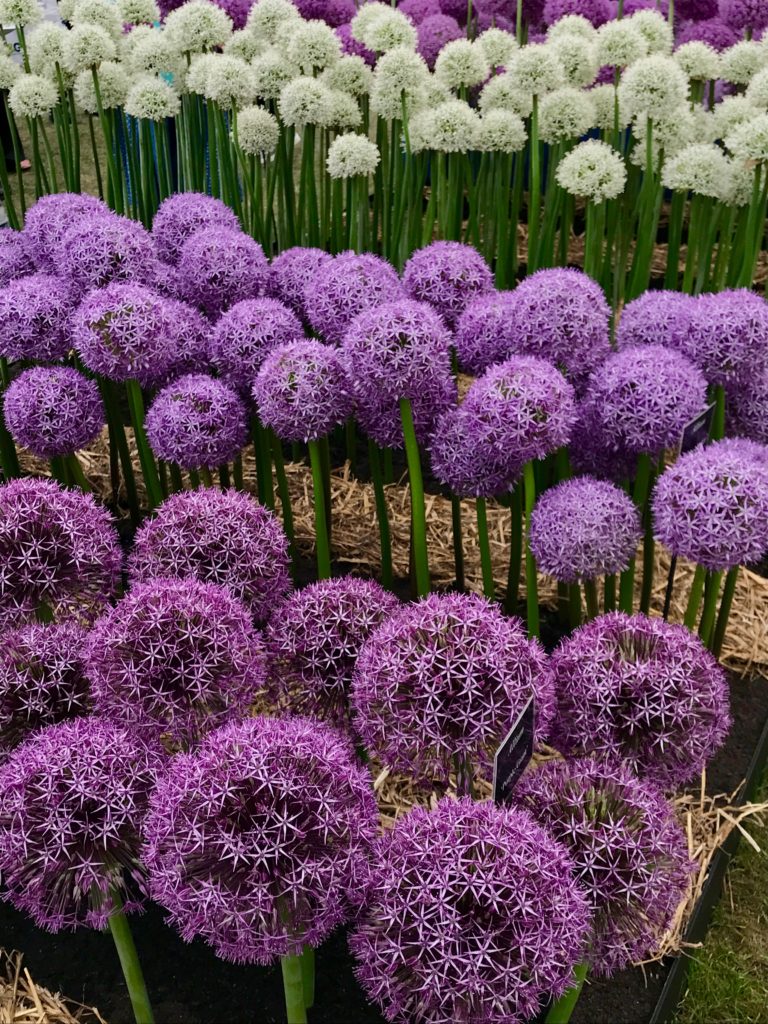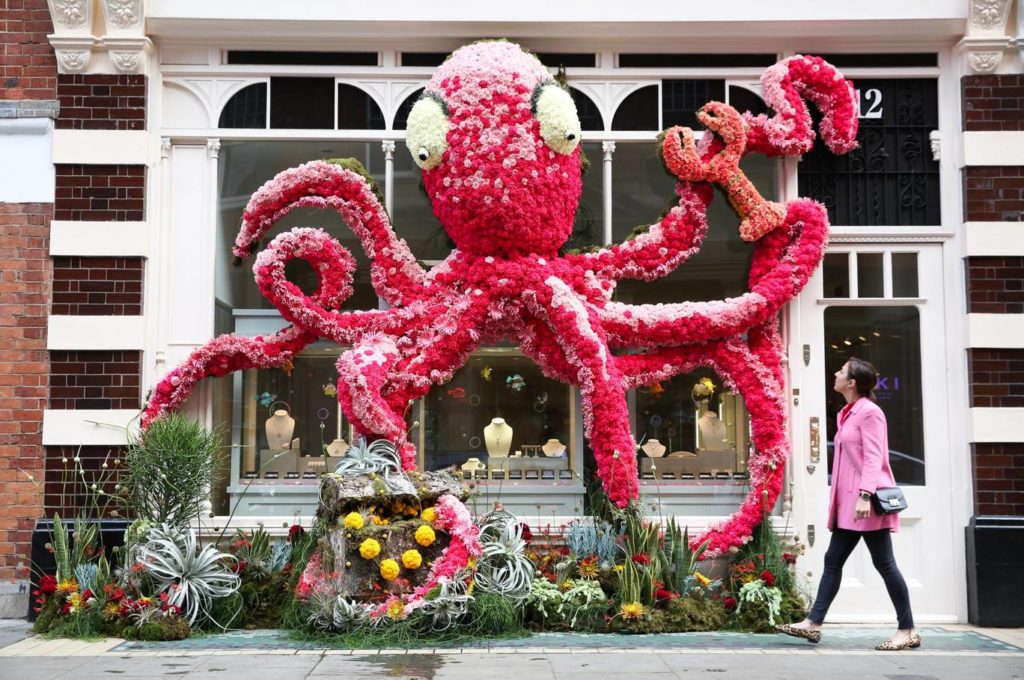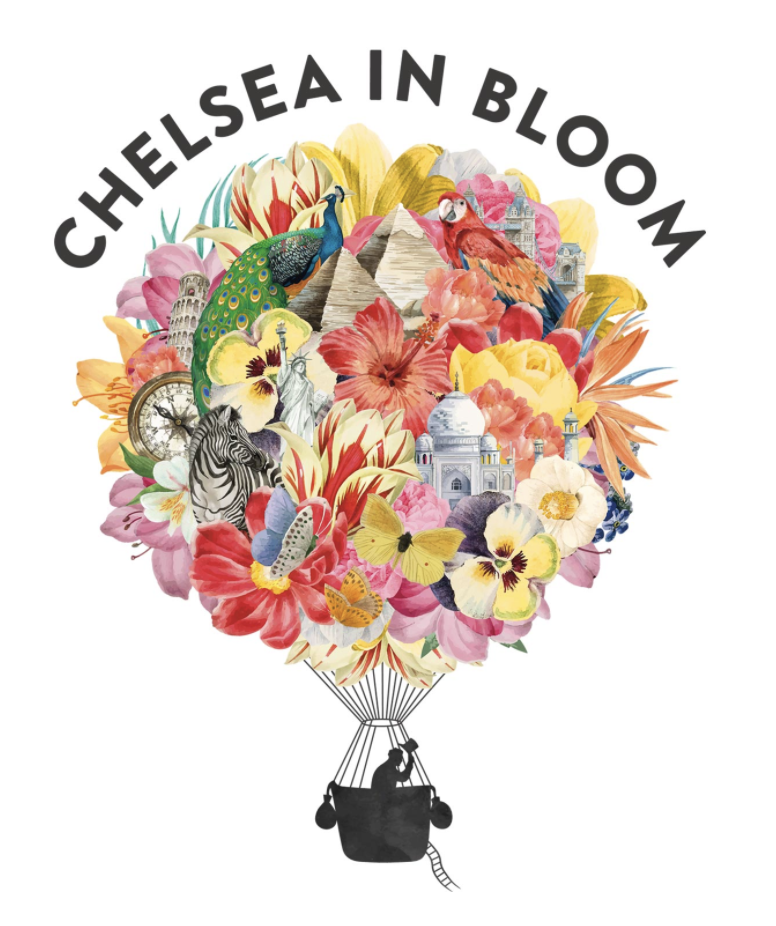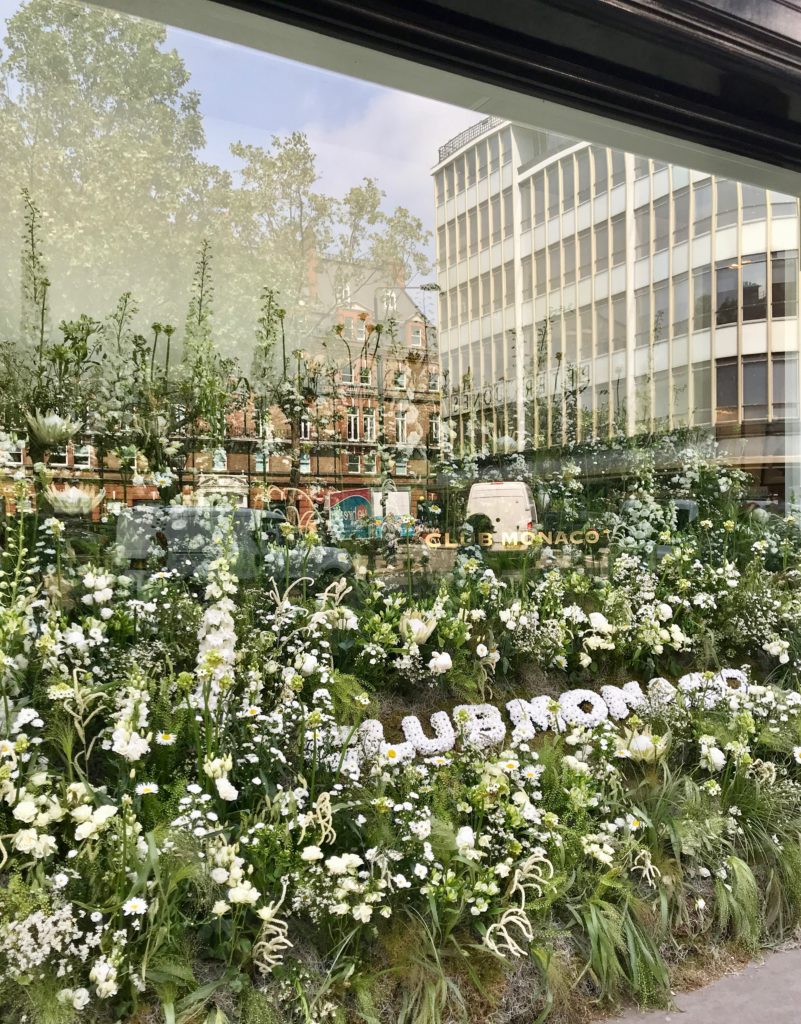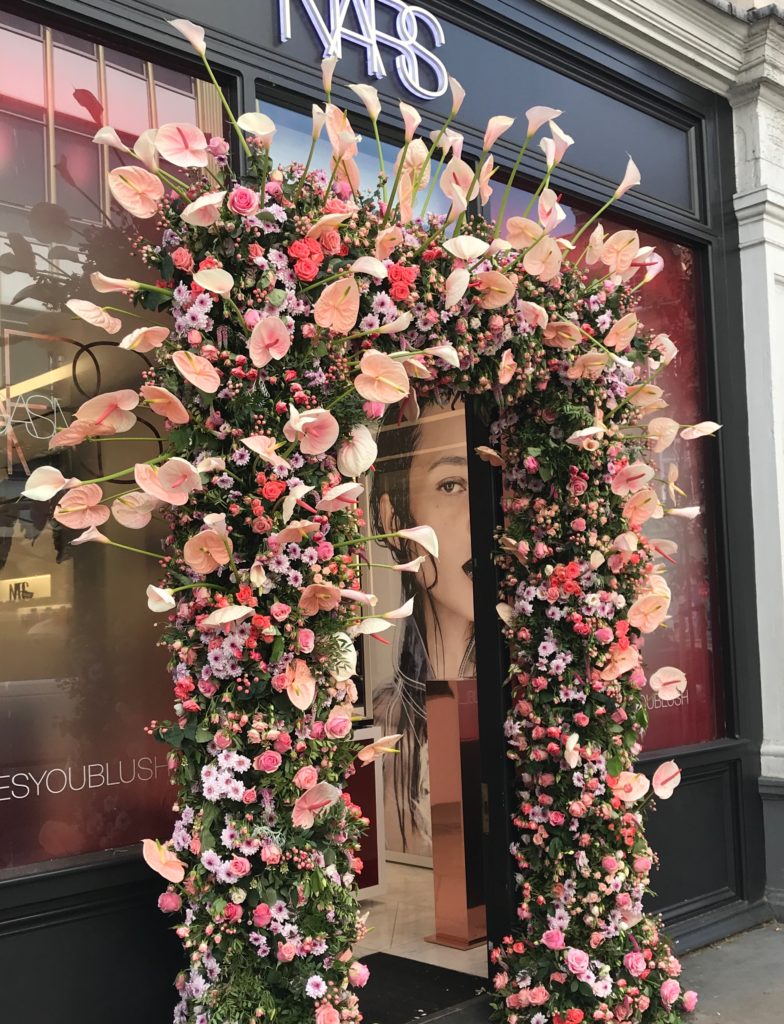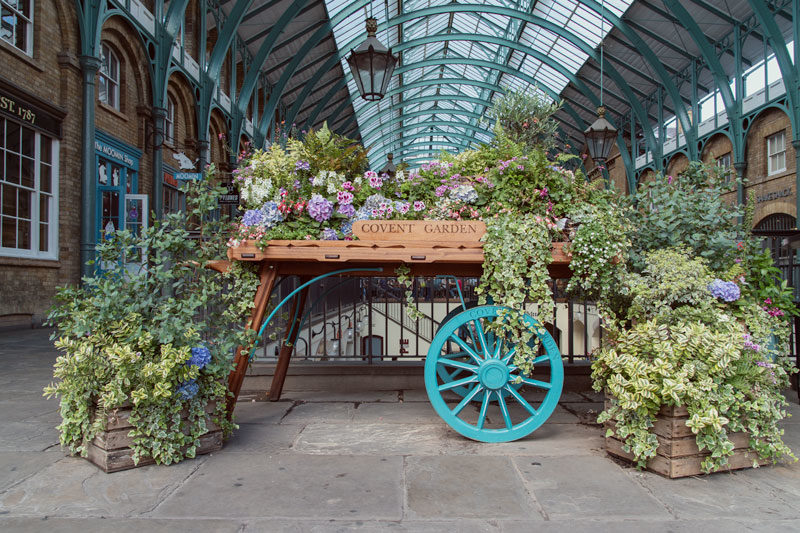FHB Highlight: «Flower Shows»
ELENA DÍAZ-GÁLVEZ PÉREZ DEL PUERTO
Mª TERESA VIDAL VIDAL
May 2021
CHELSEA FLOWER SHOW
The Chelsea Flower Show, is a flower and landscape gardens show held by the Royal Horticultural Society (RHS), in the Grounds of the Royal Hospital Chelsea, home of about 300 retired soldiers from the British Army known as Chelsea Pensioners, in Chelsea, London. The RHS is the UK’s leading gardening charity and with about 500.000 members its aim is to enrich people’s life through plants and make the UK a greener and more beautiful place.
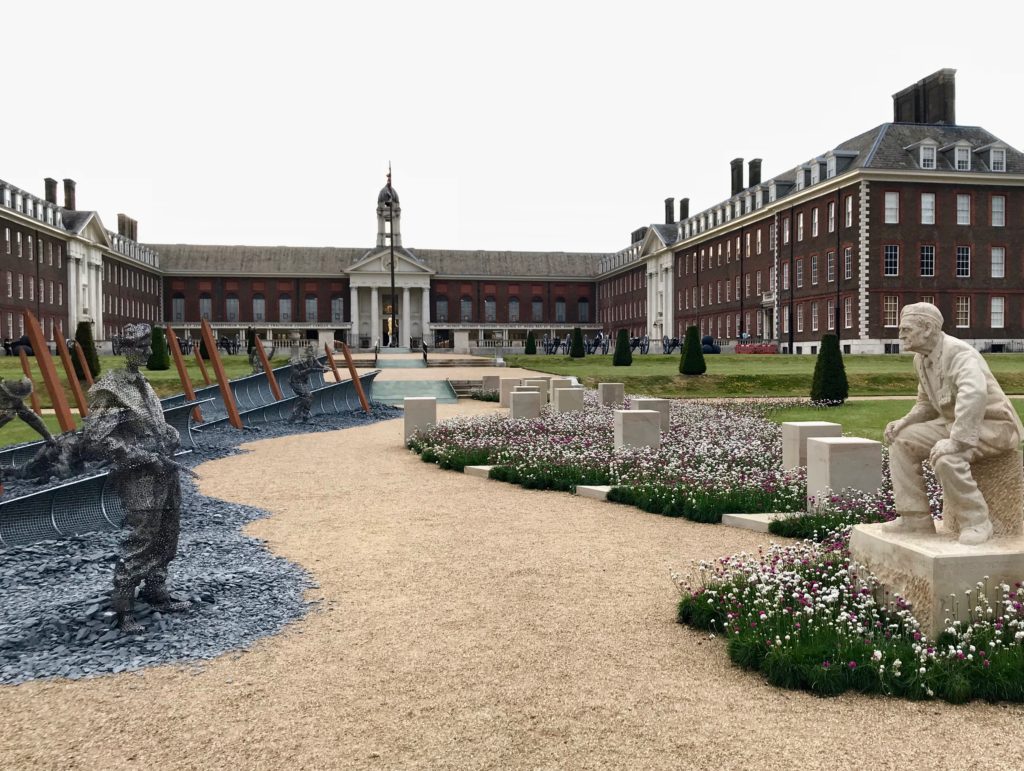
Although the Chelsea Flower Show it is not the largest event of its type, accolade reserved for the RHS Hampton Court Palace Garden Festival, it is certainly the most famous. It has been dubbed ‘the garden equivalent of the Paris Fashion Week’ or the ‘World Cup of Gardening’ and it is the highlight of the gardening season. The event is somewhat of an English national pastime and it is so embedded in the social calendar as the Ascot Races or the Henley Regatta.
Every year, for five days in May, the grounds of the Royal Hospital are transformed into a collection of show gardens and inspiring plant displays with hundreds of exhibitors competing for a Chelsea Gold Medal. The show is attended by around 160.000 visitors every year, a number limited by the capacity of the grounds, all tickets must be purchased in advance and usually are sold out well ahead of time.
The Chelsea Flower Show receives a lot of publicity, is extensively covered on television by the BBC, is attended by members of the Royal Family and attracts visitors from all over the world.
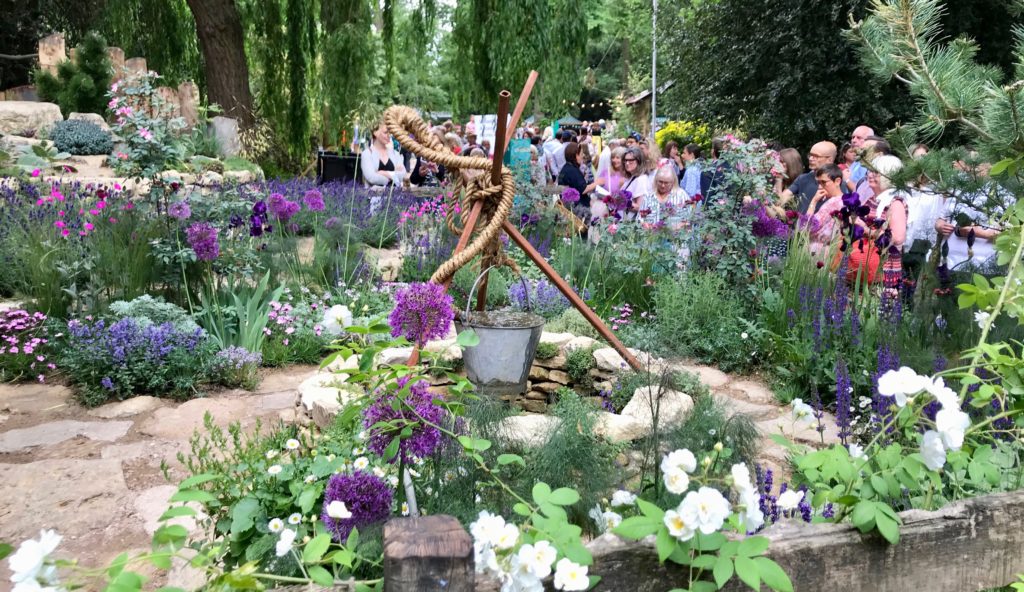
The origins of the Chelsea Flower Show go back to 1862, when the first Royal Horticultural Society ‘Great Spring Show’ was held in Kensington. In 1888 the show was moved to Temple Gardens, a central location by the Thames that proved to be a huge success with the Great Spring Show attracting some of the most prestigious seed merchants and plant nurseries in England and beyond and the number of exhibitors increasing from 48 to 120.
Despite its popularity, in 1912 the event was substituted for a one-off botanical event, The Royal International Horticultural Exhibition, to be held in the grounds of the Royal Hospital, Chelsea. It was so successful that the RHS decided to permanently relocate the Great Spring Show to the Chelsea location and on 20 May 1913 the show was held in the Grounds of Chelsea Hospital for the very first time. The first shows were three-day events held within a single marquee. Royal visits were yet to become a tradition – King George V and Queen Mary did not attend in 1913, but the King’s Mother, Queen Alexandra, attended with two of her children.
A few months after the second Chelsea show, war was declared in Europe. The show continued in 1915 but a significant number of exhibitors dropped and there was a feeling that ornamental gardening was an inappropriate indulgence so, after 1916, the show was cancelled for the duration of the war.
In 1919, the Government demanded that the RHS pay an Entertainment Tax for the show. With resources already strained, the tax threatened Chelsea but thankfully, this was wavered after the RHS convinced the Government that the show had educational benefit and in 1920 a special tent was erected to house scientific exhibits (now found in one corner of the Great Pavilion).
While the original shows were housed within one tent, the provision of tents increased after the war ended. In 1928, a tent for roses appeared and between 1920 and 1934, there was a tent for pictures, scientific exhibits and displays of garden design. In the late 1920s, two residents of Chelsea, the Countess of Lovelace & Jacqueline Hope, began to hold tea parties for celebrities and titled guests sowing the seeds of the social occasion that the show came to be.
Between the two world wars, rock gardens were probably the most popular feature of the show, attracting large crowds. The show was discontinued in 1939 for the Second World War as the Royal Hospital Grounds were required for use as an anti-aircraft base. The RHS instead focused on their ‘Dig for Victory’ campaign, showing how to grow food at home. Following the end of the Second World War in 1945, it was decided to bring the show back as quickly as possible as a determined effort to keep the flag of British horticulture flying.
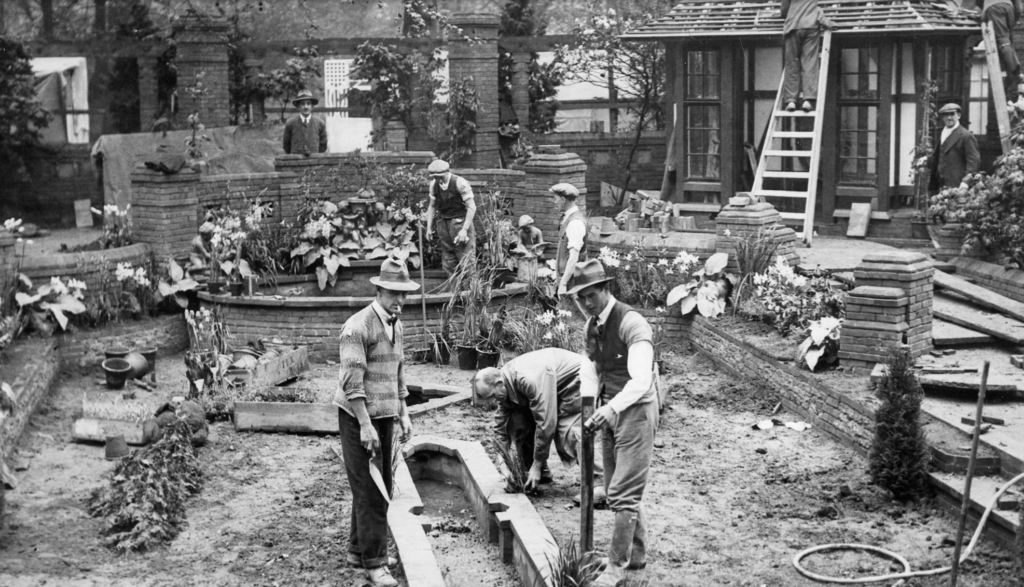
A big change came to Chelsea in 1951 when the tents were replaced by a single marquee that was bigger than anything seen before at the show. The structure was supported by 278 tent posts and covered 1.5 hectares, spending years in the Guinness Book of Records as the world’s largest tent. The 50s also saw Queen Elizabeth II acceding to the throne. She was made a royal patron of the RHS in June 1952, making her first visit to the show as Queen in 1955.
Over the next half of the century, the Chelsea Flower show came to be ‘the spring event’, attended by the ‘who is who’ of polite society including the Royal Family.
The following decades saw the rock gardens replaced by the tree and shrub garden, the largest displays of orchids and the first appearance of Bonsai trees. There were also big changes in horticulture and rather than growing plants from seed, people moved towards impulse-buying of container-grown plants.
The show became so popular that, in 1979, crowding became a major issue and admissions were prevented for the first time in the show’s history. Even with extra marquees the event was overwhelmed with thousands of visitors. To avoid overcrowding, the show’s opening hours were extended, with discounted tickets available after 4 pm to discourage morning crowds. In 1988 admissions were limited to 40.000 a day and for the first time, RHS members were charged, fact that led to the resignation of 10.000 members in protest. Today RHS members are charged for tickets although they do get a members-only day.
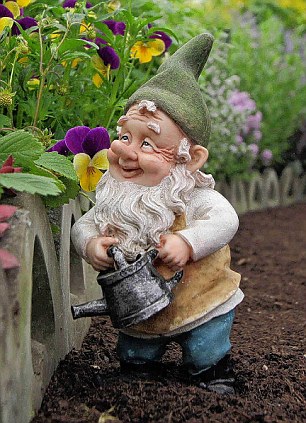
The Chelsea Flower Show celebrated its 100th birthday in May 2013 with a celebratory edition that focused on biodiversity and sustainability. In what the RHS understood as a display of their sense of humour the, often controversial, ban on garden gnomes was temporarily lifted. The gnomes were not only allowed but positively celebrated with well-known faces – including Elton John, Helen Mirren or Julian Fellowes– painting gnomes to sell in aid of the RHS campaign to install more gardens in schools and the Queen inspecting a parade of 150 gnomes lined up for the occasion.
Today, RHS Chelsea Flower Show, retains its unrivalled status as the premier event in horticulture. For garden and landscape designers and their sponsors, specialist nurseries, florists and sellers it remains as the world’s most prestigious flower show and continues to attract visitors from all corners of the globe.
One of the highlights of the show are always the ‘Model’ or show gardens. They had modest beginnings – the first were small rock gardens mounted on the top of tables within the show tent at the flower shows that pre-dated Chelsea but they gradually outgrew this format and relocated outside. Today, the show gardens, associated with big name designers and even bigger budgets, are the feature of the Chelsea Flower Show that attracts the most media and public attention. Over the years the quality and ambition of the show gardens has been taken as a barometer of the health of garden design and even horticulture as a whole – despite the fact that they bear as much resemblance to real gardens as Michelin-starred restaurant food does to home cooking. Nevertheless, show gardens do reflect and shape horticultural trends and garden design.
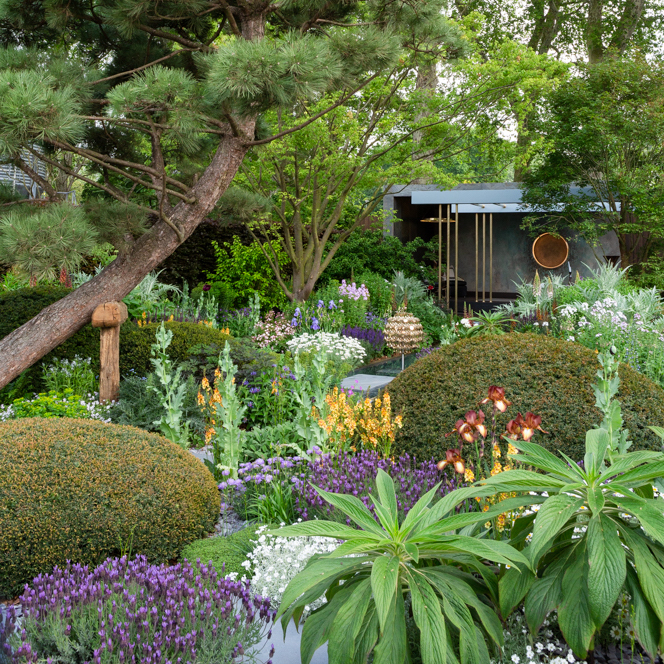
📷 Jayne Lloyd, RHS CHELSEA 2019 SHOW GARDENS
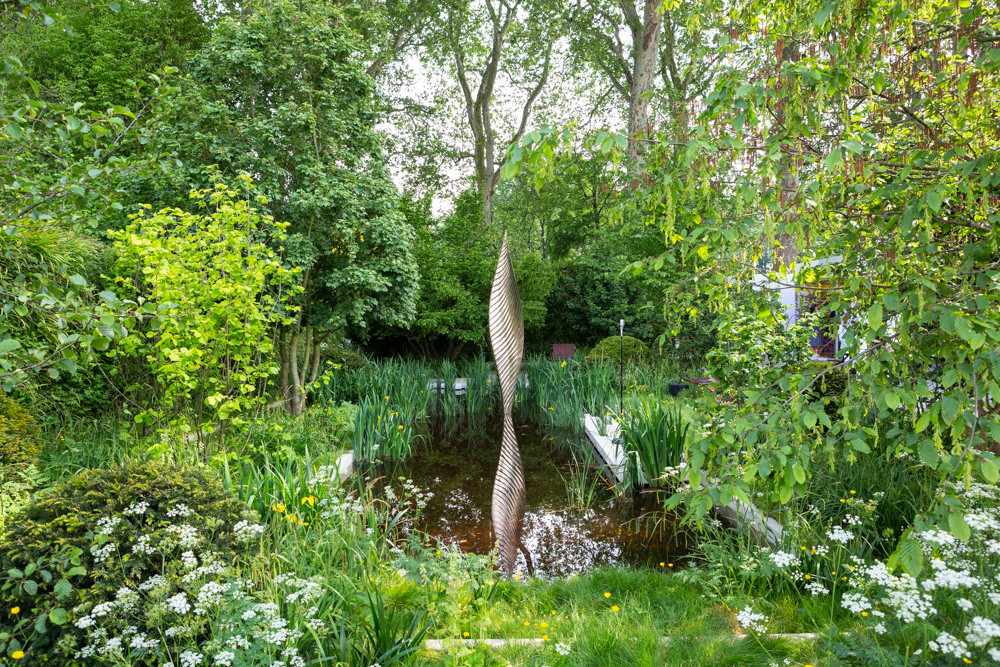
📷 Jayne Lloyd, RHS CHELSEA 2019 SHOW GARDENS
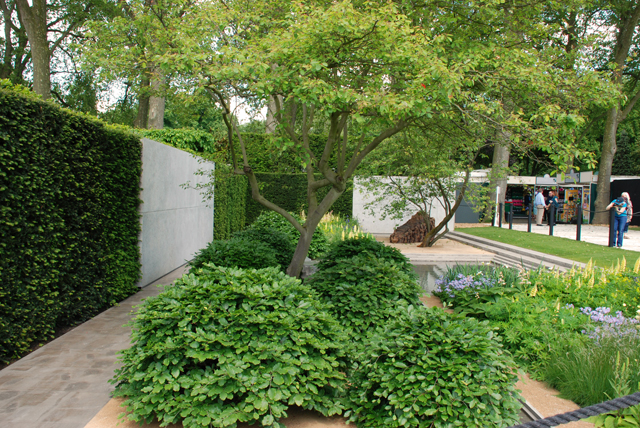
RHS Chelsea 2014 – The Laurent-Perrier Garden 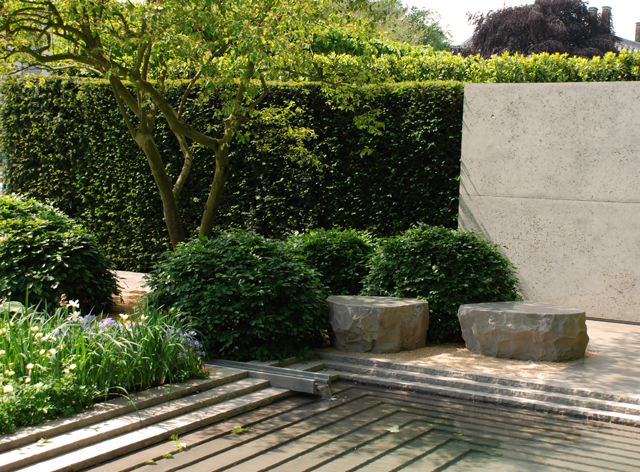
RHS Chelsea 2014 – The Laurent-Perrier Garden
In 1997, luxury fashion house Yves Saint Laurent commissioned a Garden to coincide with the launch of its iconic fragrance Opium. This kickstarted the trend for high-end brands such Chanel and Laurent Perrier creating beautiful gardens and displays at the Chelsea Flower Show every year.
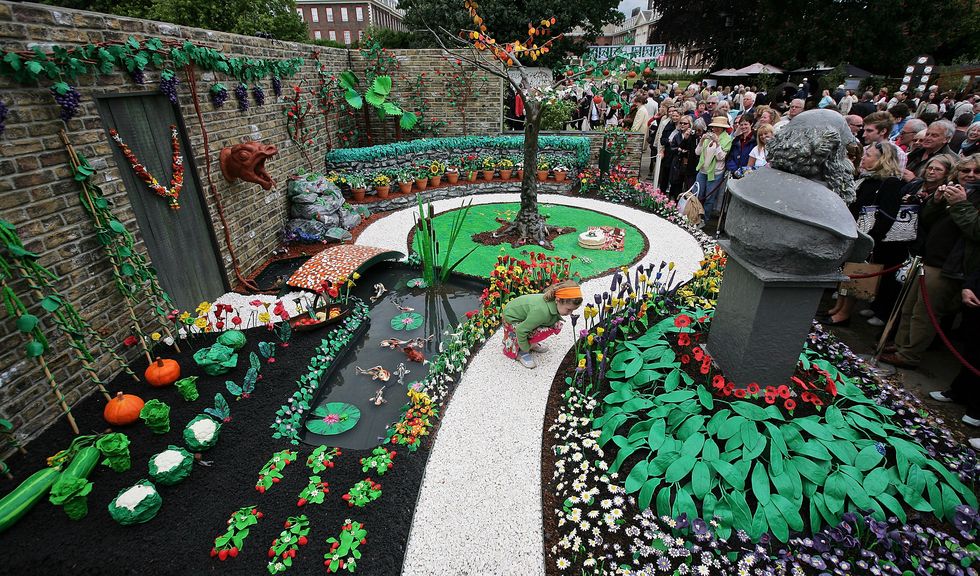
In 2009, British Television presenter James May made history at Chelsea Flower show with his ‘Paradise in Plasticine’. The colourful garden of spring blooms, roses, a fruit tree and a lawn laid with a picnic was created entirely from plasticine. He received an unofficial plasticine gold medal and tricked the judges by hiding a gnome in his display.
In 2016, and in the spirit of the Tower of London 2014 poppies display to honour the sacrifices made by servicemen and servicewomen in the world conflicts, Phillip Johnson, an Australian landscape designer who won Best Show Garden in 2013, created a poignant flower exhibit using almost 300.000 individually crocheted or knitted poppies that adorned the vista from the showground to the Royal Hospital that year.
The Royal Family involvement with the show went one step further than the annual Royal visit and in 2019 the Duchess of Cambridge was involved in the design of a garden that was baptized “Return to Nature”. The garden, inspired by childhood memories, wanted to celebrate the benefits of going out to the fields “for the physical and mental well-being, especially of the children” as Catherine said when presenting her creation to the press. The garden, a refuge of thick vegetation, included a house in a tree with a swing, a cabin with space to make a bonfire and a stream where you get your feet wet. The garden was visited by the Queen and was later moved to a public mental health centre.
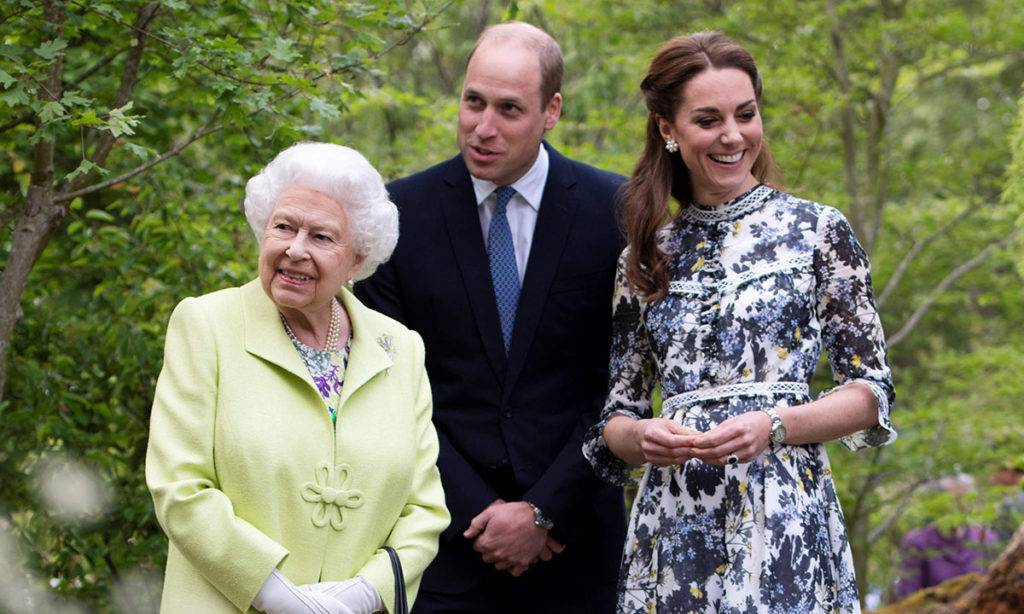
The Great Pavilion, a central feature of the show, is roughly 12.000 m2 in size, enough to park 500 London buses. The obelisk in the centre of the Great Pavilion tent is normally surrounded by fields of grass. The monument honours those who lost their lives in the 1849 Battle of Chillianwala in the Second Anglo-Sikh War. The tent is built over and around the monument for the show. The exhibition inside contains displays from some of the best nurseries in Britain, science and education presentations about horticulture, floral arrangements and floristry displays.
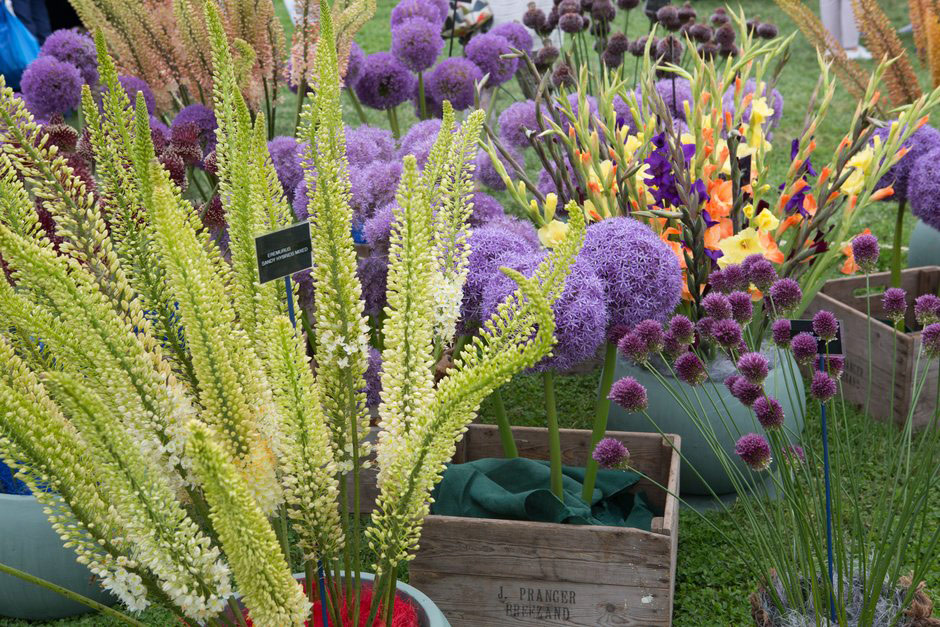
A huge amount of planning and work goes into setting Chelsea up before the gates can open for members on the first day. Show gardens typically take three weeks to set up, and have to be dismantled in just five days once the Show has finished. Over 2,000 tonnes of earth are moved in preparation for the show.
During the week of the Show, plants are not for sale but every year at 4pm on the last day, the ring of a bell marks the great plant sell off when exhibitors sell any plants they do not want to take away. Polite chaos ensues, as for 90 minutes keen gardeners snap up plants and then puzzle out how they are to get them home in one piece.
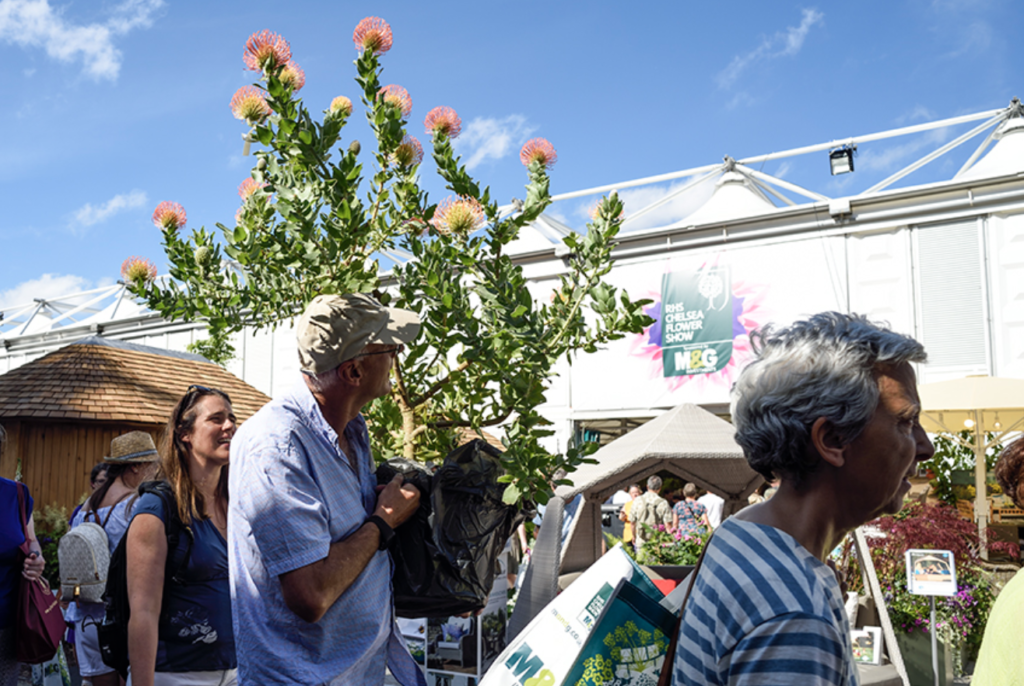
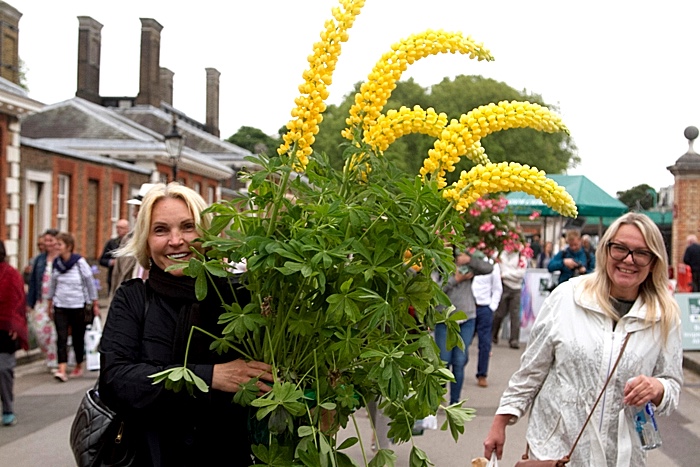
EPYTBN London UK. 23rd May 2015. Members of the public carry colorful flowers and plants in a sell off on the last day of the Chelsea flower show © amer ghazzal/Alamy Live News
In recent years, the RHS has been determined to reduce waste. Many show gardens are planned with a second, permanent home in mind, and these are carefully dismantled and replanted after the show. Across the site timber, compost, woodchip, bricks and other materials are passed onto community groups to re-use. Entire gardens have been created out of this waste material, notably the Desmond Tutu Peace Garden in Lewisham.
In 2020, in the midst of the pandemic, the Chelsea Flower Show went digital for the first time. RHS Virtual Chelsea brought joy to the nation and beyond, as millions of people turned, or returned to gardening, and delivered inspirational articles and fun and informative videos created by designers, judges, plant experts and RHS Garden Advice. RHS Virtual Chelsea will be back once again from 17-21 May 2021 to offer a mix of inspirational ideas, top tips from nursery exhibitors who would have been at the May show, conversations with designers and celebrity gardeners, and exclusive September show news.
For the first time in its 108-year history, the 2021 Chelsea Flower Show will be held on 21-26 September rather than its usual May slot giving the opportunity of an autumn show where seasonality may have a play.
Now celebrating the best of autumn horticulture, the September Show will no doubt be very different to the usual spring event during the key gardening season, but it has not to be less spectacular. The show will run for a total of six days for the first time ever. There will be reduced visitor numbers compared to pre-COVID shows, with 140,000 visitors at the show over six days, compared to 168,500 over five days in 2019.
Despite all the status as “the world’s most prestigious flower show”, the Chelsea Flower Show comes with some problems such the unavailability of tickets, the crowds, the fact that the gardens can’t be stepped on or that children under five are not allowed into the grounds. So, for an alternative way to celebrate and enjoy plants and gardens in spring in London, other options can be found.
Chelsea in Bloom
A world class alternative floral art show transforms the streets of Chelsea with breath-taking floral displays coinciding with the Chelsea Flower Show. The annual competition that focuses on a given theme every year has grown dramatically over the years, with Chelsea’s best retailers, restaurants and hotels adorning themselves with creative designs showcasing floral displays, each reflecting their own unique interpretation of the theme. The 2021 edition will be held from 20-25 September and the theme is ‘Extraordinary Voyages’, inspired by ‘Around the world in 80 days’ and evoking the spirit of optimism, adventure of the golden age of travel. Other past themes have included ‘Floral Safari’ in 2017 and ‘Fairy Tales’ in 2015. The displays are judged by an expert panel and there is also a ‘People’s Champion Award’ chosen by open voting.
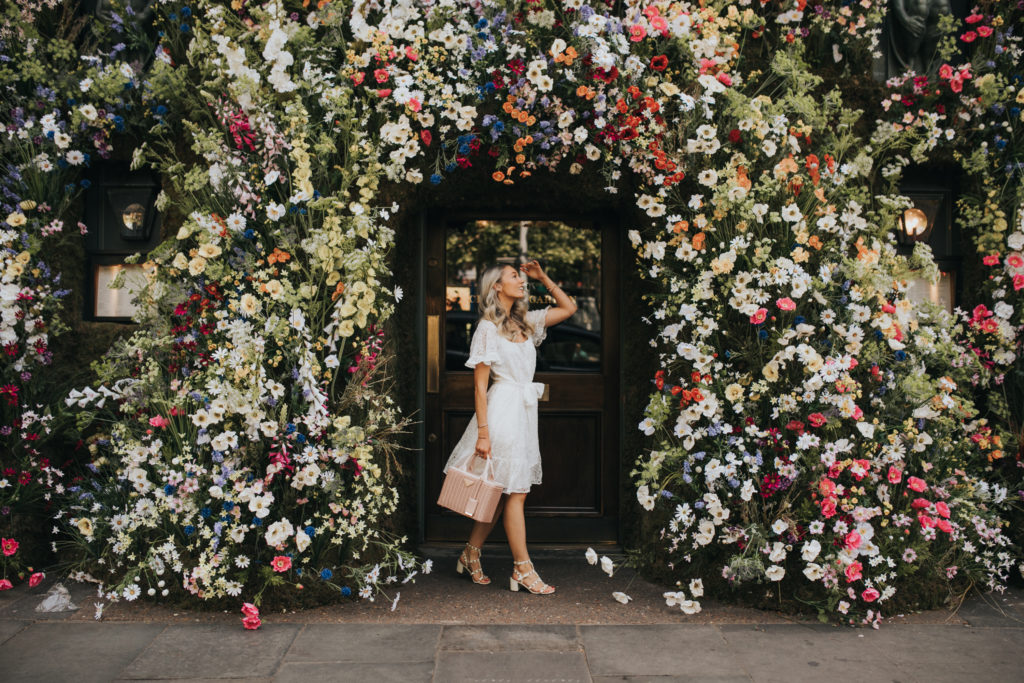
Belgravia, Mayfair and Covent Garden in Bloom
Many London neighbourhoods host their own display of floral and garden arrangements coinciding with the Chelsea Flower Show. All of them may be visited free of charge and take place in selected venues.
In 2019 Belgravia hosted a festival inspired by the Victorian classic ‘The language of Flowers’ that took take place across two venues and featured mood gardens, scent stations & floral workshops and activities. In Belgravia’s Halkin Arcade, four immersive mood gardens were created. Filled with lavender ‘The Serenity Garden’ aimed to provide a soothing space for visitors to recharge in, while you were able to sopt dogwood flowers on the ceiling of ‘The Tunnel of Resilience’. A canopy of freesias occupied ‘The Canopy of Friendship’ and in the ‘Spiral of good luck’ white walls of Japanese wisteria immersed visitors in the lucky flowers.
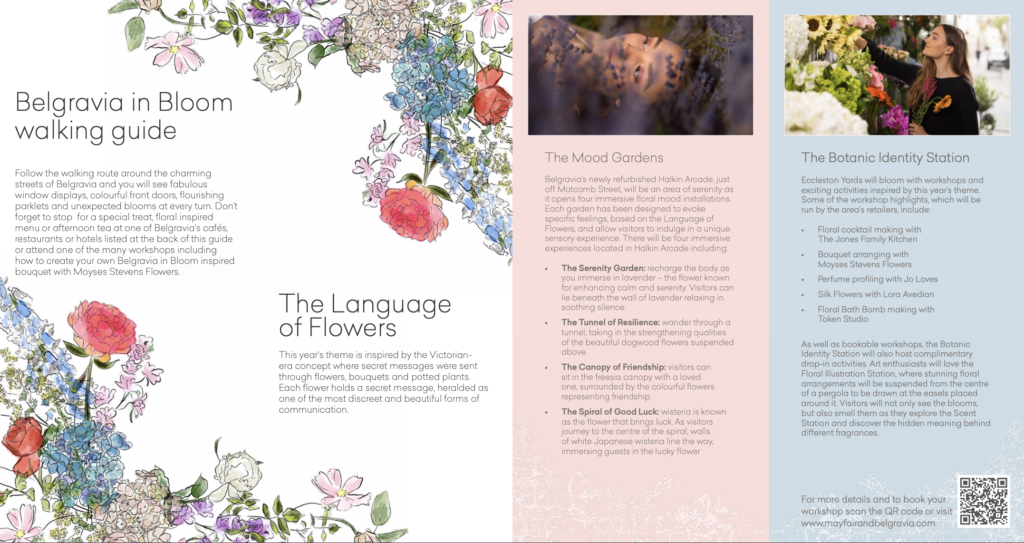
Covent Garden, originally a fruit and vegetable garden belonging to the Westminster Abbey, became later one of the best fresh food markets in the UK and the birthplace of the most iconic flower sellers in London. The annual Covent Garden in Bloom festival sees the neighbourhood burst into colour with spectacular flower displays in flagships stores in the markets. You’ll also find lots of unique botanical themed products on offer like cakes, cocktails and afternoon tea, as well as special events, live music and alfresco dinning.
Unfortunately, those events were last celebrated in 2019 and are not yet scheduled to return in 2021 although are worth keeping in mind for their future come back.
Mª TERESA VIDAL VIDAL
Enlace relacionado ➡️ British Flower Shows
Bibliografia
- https://www.rhs.org.uk/#nav-shows
- https://www.countryandtownhouse.co.uk/culture/the-cth-guide-to-the-chelsea-flower-show/
- https://www.dailymail.co.uk/news/article-2276319/Welcome-gnome-Chelsea-flower-lifts-ban-tacky-garden-ornaments-time-100-year-history.html
- https://www.architecturaldigest.com/story/inside-the-garden-duchess-kate-designed-for-the-chelsea-flower-show
- https://www.housebeautiful.com/uk/garden/a32484677/chelsea-flower-show-2021/
- https://www.housebeautiful.com/uk/garden/plants/g47/chelsea-flower-show-facts/
- https://www.britain-magazine.com/features/history-of-the-chelsea-flower-show/
- https://www.gardensillustrated.com/chelsea/chelsea-flower-show-in-numbers/
- https://www.gardensillustrated.com/chelsea/chelsea-flower-show-timeline-dates/
- https://www.gardensillustrated.com/chelsea/royals-at-chelsea-flower-show/?image=1&type=gallery&gallery=1&embedded_slideshow=1
- https://www.corinthia.com/london/discover-london/everything-you-need-to-know-about-the-history-of-chelsea-flower-show/
- https://www.rhs.org.uk/digital-collections/making-chelsea
- https://www.housebeautiful.com/uk/garden/g27518886/chelsea-flower-show-gardens/?slide=3
- https://reckless-gardener.co.uk/show-gardens-living-legacy-after-rhs-chelsea/
- https://reckless-gardener.co.uk/wonders-of-the-chelsea-great-pavilion/
- https://www.destinationsdetoursdreams.com/2019/07/the-great-pavilion-at-the-chelsea-flower-show/


